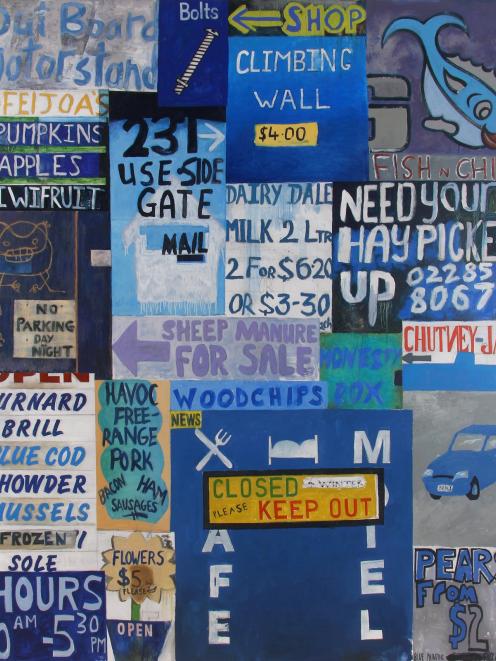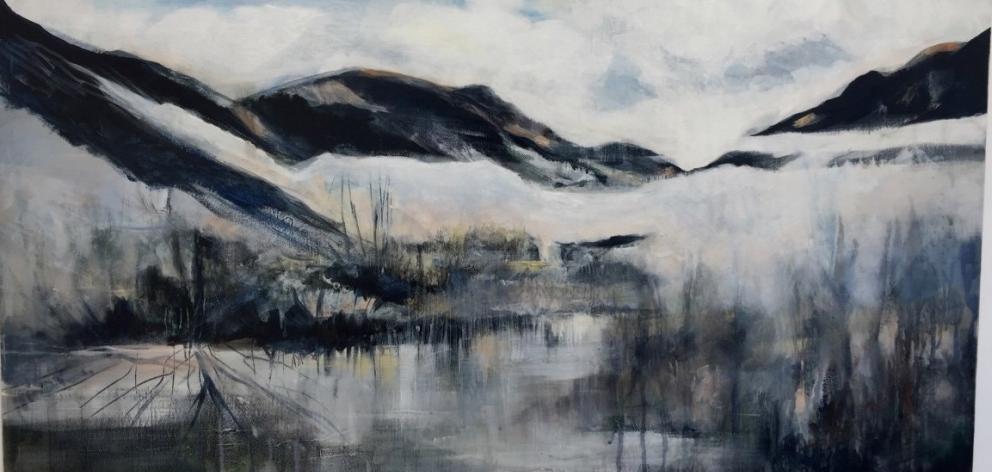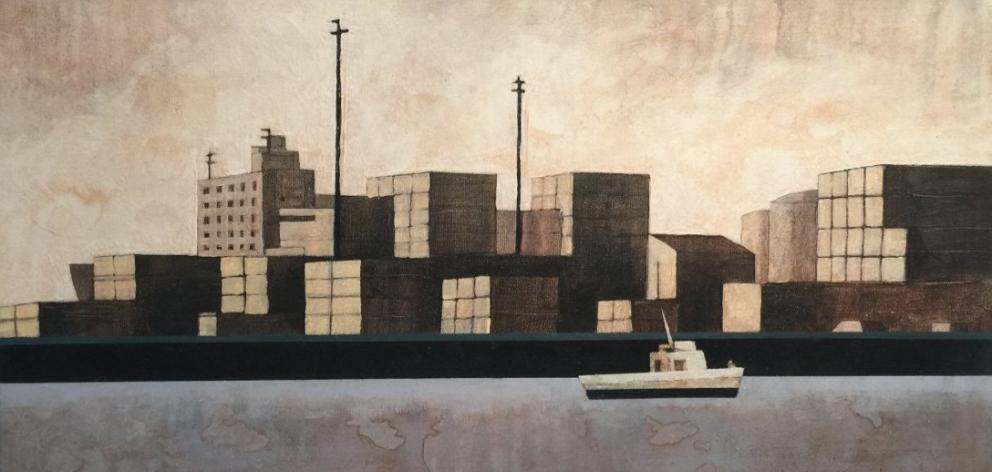
A hand-painted road sign advertising farm produce and firewood for sale. The words "Garage Sale'' lettered across a piece of cardboard. A board listing the catches of the day outside a fish and chip shop. These are symbols of life in small-town New Zealand that evoke memories of childhood road journeys, the rosy glow of a so-called simpler time that seems increasingly at odds with the technology-driven world of today. Always witty and tongue-in-cheek, iconic New Zealand artist Dick Frizzell paints these signs of rural commerce into a patchwork of slogans and illustration. Mundane signage turned into pieces of gallery art, provoking commentary about the intersection between commercial and fine art, and ever-changing Kiwi culture. Frizzell also pokes gentle fun at pretension and artifice in the "high art'' establishment - the obvious irony when signs advertising horse manure hang in a gallery setting to be contemplated, discussed at length, and dissected for meaning.
Frizzell has always managed to combine humour and satire with unexpected pathos. Works incorporating the poetry of Sam Hunt strip back the palette to blocks of stark colour, the painted words of life and death and reflection seeming as if they've been scrawled down spontaneously, intimately. It's a similar feeling to unexpectedly finding writing on a wall or in a hidden space; it seems somehow to address you alone and resonates deeply.

Lorraine Higgins has an evocative painting style that brings to life an atmosphere rather than a direct representation of a scene. Up close, distinct splashes of unexpected colour stand out, but step back and everything comes together in a beautiful haze of light and shadow. She has a particular knack for conveying a sense of season and weather, so strongly that the crispness of the air in Autumn Fog is almost tangible. Night advances in Crown Range, with its streaks of colour like car lights flashing along the winding roads. The landscape is disappearing into the shadows of darkness and home beckons. Rapid brushstrokes in Cardrona Range effectively convey trees dancing in the wind, and a golden glow shines through the mist in Morven Hill, illuminating branches of trees cast into ghostly shadow.
Inspired by Robert Frost's Nothing Gold Can Stay, a bittersweet poem about the perpetual cycle of day and night, life and death, and the transience of beauty, Higgins painted outdoors and captured moments in time, an artist connecting with her environment-but also a sense of agelessness, as if the scene could be now or years in the future. The sun will always set, winter will come and "nothing gold can stay'', but something profound endures.

Rachel Hirabayashi talks of painting from "emotional memory'', rather than directly translating what the eye sees at any given time. Even familiar landscapes are invested with a sense of history, and mystery, influenced by personal thoughts and experience. Her instantly recognisable style incorporates washes of pigment that can give the illusion of weathering, as if the images might be artefacts from another time. It's often as if you're viewing the paintings through a historical lens, a portal into the past.
In previous collections, Hirabayashi has focused on pioneer trails and early churches, and the resulting works frequently had a slight eeriness, like seeing ghosts and echoes coming to life on the canvas. That ethereal quality persists in her latest exhibition, "Foreshore'', but is fascinatingly positioned against a more industrial subject. Boats sail in front of docks crowded with buildings, and life and commerce ticks over busily in the background. However, in works like Bluff: Harbour, the flat brown tones of the buildings contrast with the vibrancy of the blue sea, and it's like looking at a sepia-toned old photograph. The white buildings dotted along the shore in Bluff: Motupohue look almost like tombstones, evoking memories of the artist's church series. Hirabayashi weaves threads of the old and the new, the past and the present, into a very striking collection.
- Laura Elliott












